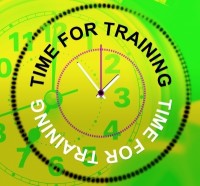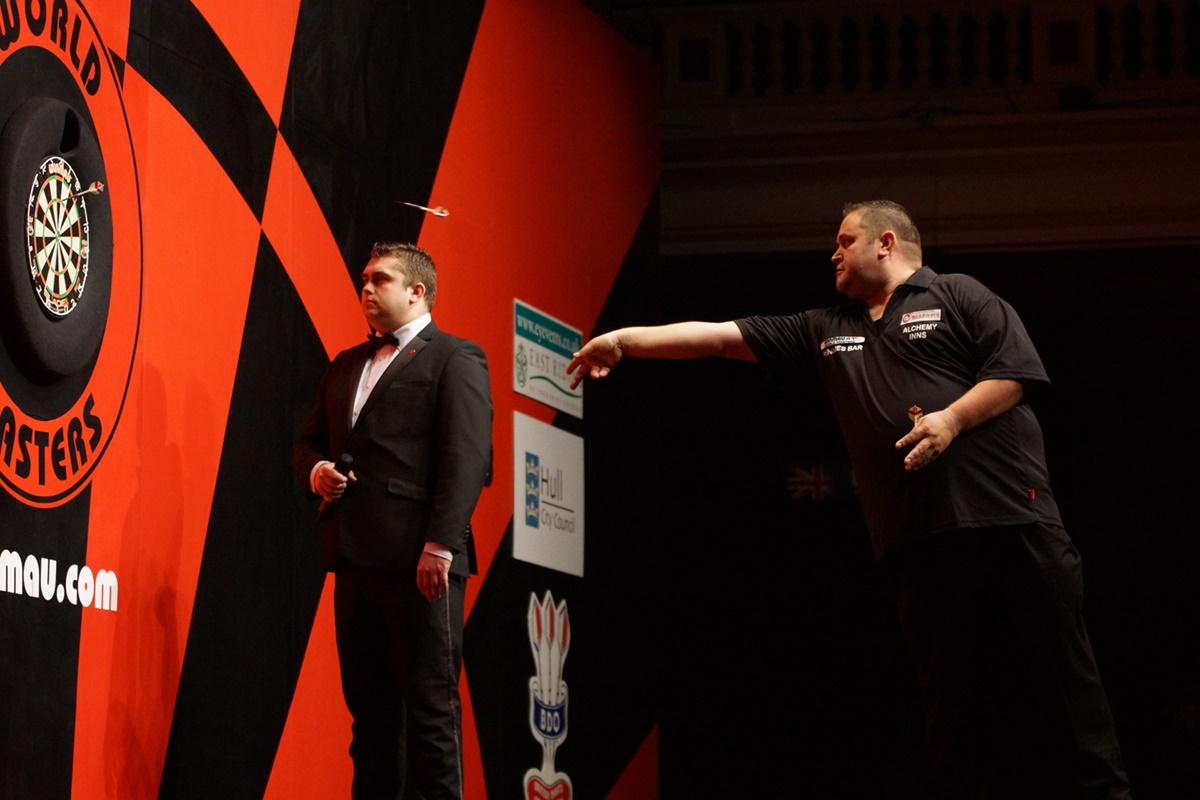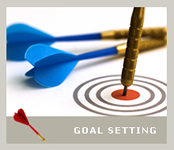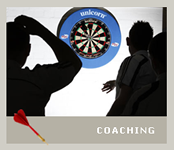
Coaching Clinic 41
Posted: 12.12.14 in Coaching Clinic Blog category
This month we follow up from last month's fault finder with the most common errors we spot in a darts throw!
Last month we gave you a fault finder chart to give you an idea of common technique errors that will have a detrimental effect on your game. Shortly after the article was published we held our annual tournament, The New Forest Masters. I was in a most advantageous position to be able to watch, close up, a good few of the games. This helped me detect which errors seem the most common amongst dart players.
STANCE – The golden rule here is to set up the same way each time. I saw players positioning themselves on the oche in what appeared to be different spots during their game. Yes, you do need to move on the rare occasion a dart is blocking a bed but please go to the same spot at the start of every throw otherwise it will affect your accuracy.
BODY MOVEMENT- The first thing to say is that all players do move when they throw. There is (usually) a forward movement which is the momentum of releasing the dart.
However, there are also players that sway from side to side, lurch forward or do a bunny hop on release. There are two main issues here. First of all you will struggle to get consistent accuracy if you are moving or jumping. The second thing is that are you sure you are landing back in the same position after each throw if you are swaying or jumping or both!
Like lining up in the same place on the oche, if you throw with your body in a different position then this is another factor that will knock your chances of throwing precision darts.
RELEASE - A jerky release or pulling the dart can cause all kinds of problems, sometimes it can be caused by something as simple as gripping the dart too tightly. The release should be smooth and fluid like. Some players count down their throw to get a rhythm going to help with releasing smoothly: One, Two, Three Release, One Two Three etc
FOLLOW THROUGH – Your arm needs to be on the same plane as the throw and the flight path of the dart. To practise this try following through by pointing your finger at the target you have aimed for. Like this:

Photo of Alan Norris and his excellent follow through courtesy of DG Media
A full extension of the arm is better but if this is painful do not force it.
If you do get pain when you are trying to get your arm to extend fully on release try some stretching exercises to allow you to straighten the arm. You would need to do these every day to start building up your flexibilityas it needs constant maintenance and is not as enduring as strength training without keeping it up.
Please do give yourself the once over (or get a friend to check you over) as we cannot emphasise enough how vital a solid technique is.
We would like to wish all our readers a Happy Christmas and we will be back in 2015!
.............................................................................................................................................
The Darts Performance Centre is a resource to assist dart players of all standards play better darts. The site is arranged as an online coaching manual. There is advice on technique, nerves, psychology, goal setting, practice games, an area to log your statistics and an interactive area where your darting questions are answered by two sports scientists, one with 30 years dart playing experience. You also get an invite to our free but exclusive members only events and acess to our members only darts coaching app! Membership is £25 per year!
Post by Category
Posts by Month
- November 2025
- October 2025
- September 2025
- August 2025
- July 2025
- June 2025
- May 2025
- April 2025
- March 2025
- February 2025
- January 2025
- December 2024
- December 2024
- November 2024
- October 2024
- September 2024
- August 2024
- July 2024
- June 2024
- May 2024
- April 2024
- March 2024
- February 2024
- January 2024
- December 2023
- December 2023
- November 2023
- October 2023
- September 2023
- August 2023
- July 2023
- June 2023
- May 2023
- April 2023
- March 2023
- February 2023
- January 2023
- December 2022
- December 2022
- November 2022
- October 2022
- September 2022
- August 2022
- July 2022
- June 2022
- May 2022
- April 2022
- March 2022
- February 2022
- January 2022
- December 2021
- December 2021
- November 2021
- October 2021
- September 2021
- August 2021
- July 2021
- June 2021
- May 2021
- April 2021
- March 2021
- February 2021
- January 2021
- December 2020
- December 2020
- November 2020
- October 2020
- September 2020
- August 2020
- July 2020
- June 2020
- May 2020
- April 2020
- March 2020
- February 2020
- January 2020
- December 2019
- December 2019
- November 2019
- October 2019
- September 2019
- August 2019
- July 2019
- June 2019
- May 2019
- April 2019
- March 2019
- February 2019
- January 2019
- December 2018
- December 2018
- November 2018
- October 2018
- September 2018
- August 2018
- July 2018
- June 2018
- May 2018
- April 2018
- March 2018
- February 2018
- January 2018
- December 2017
- December 2017
- November 2017
- October 2017
- September 2017
- August 2017
- July 2017
- June 2017
- May 2017
- April 2017
- March 2017
- February 2017
- January 2017
- December 2016
- December 2016
- November 2016
- October 2016
- September 2016
- August 2016
- July 2016
- June 2016
- May 2016
- April 2016
- March 2016
- February 2016
- January 2016
- December 2015
- December 2015
- November 2015
- October 2015
- September 2015
- August 2015
- July 2015
- June 2015
- May 2015
- April 2015
- March 2015
- February 2015
- January 2015
- December 2014
- December 2014
- November 2014
- October 2014
- September 2014
- August 2014
- July 2014
- June 2014
- May 2014
- April 2014
- March 2014
- February 2014
- January 2014
- December 2013
- December 2013
- November 2013
- October 2013
- September 2013
- August 2013
- July 2013
- June 2013
- May 2013
- April 2013
- March 2013
- February 2013
- January 2013
- December 2012
- December 2012
- November 2012
- October 2012
- September 2012
- August 2012
- July 2012
- June 2012
- May 2012
- April 2012
- March 2012
- February 2012
- January 2012
- December 2011
- December 2011
- November 2011
- October 2011
- September 2011
- August 2011
- July 2011
- June 2011
- May 2011
- April 2011
- March 2011
- February 2011
- January 2011
- December 2010
- December 2010
- November 2010
Main Index






.jpg)
.jpg)
.jpg)

